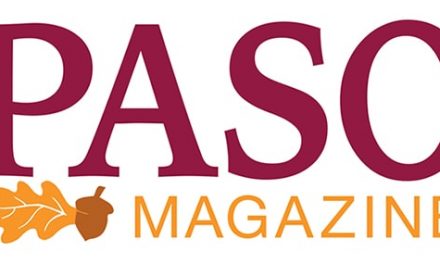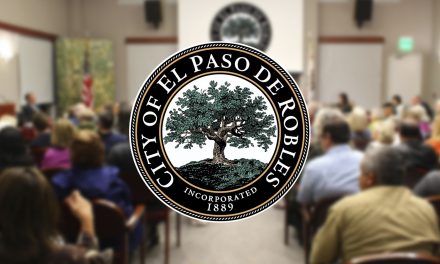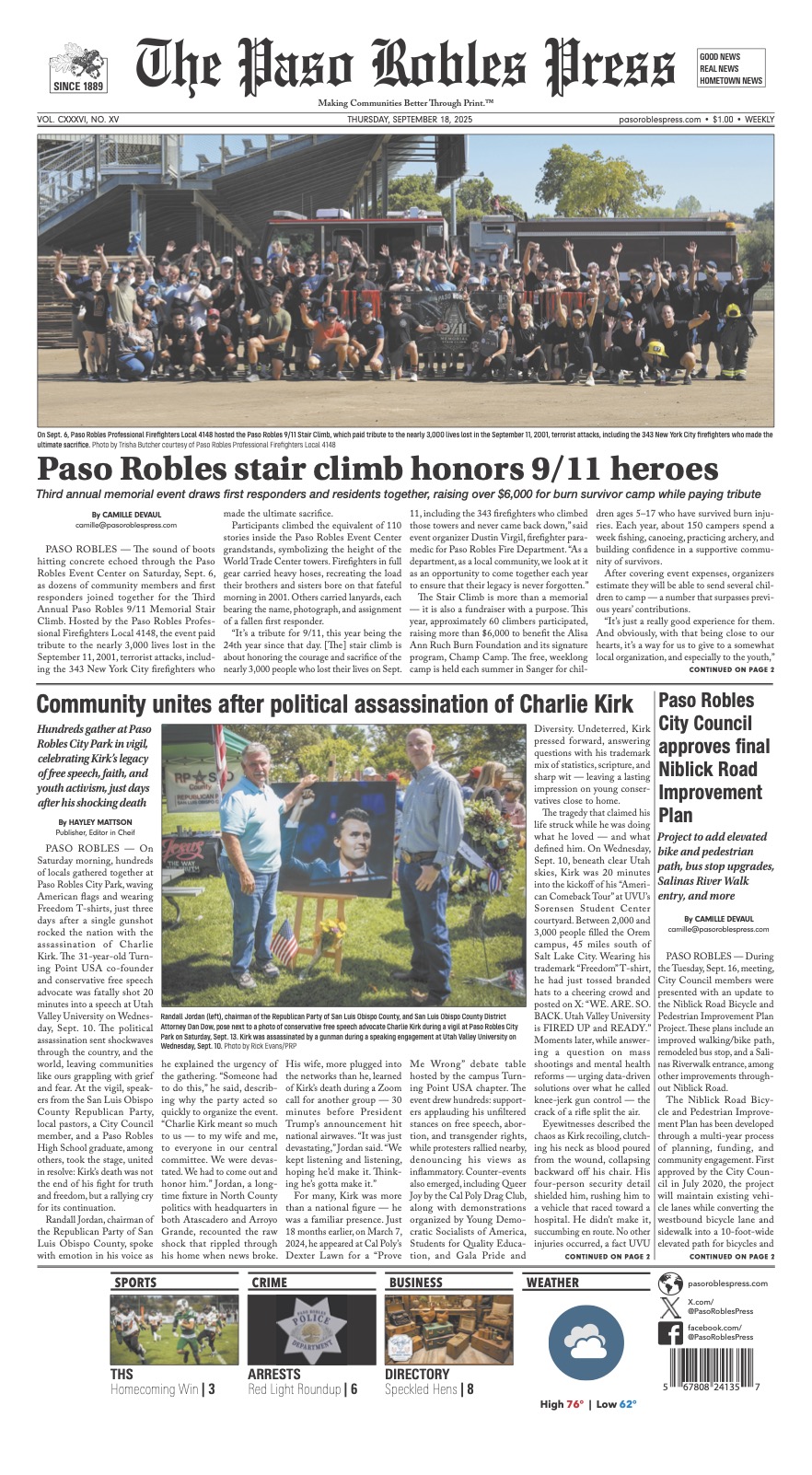PASO ROBLES — Paso Robles City Council addressed the reduction of hazardous fuels in the Salinas Riverbed and updated its policy regarding people living in the riverbed during a special meeting on Wednesday, July 15.
Paso Robles Fire Department Fire Chief Stornetta gave a presentation highlighting the several fire hazards within the riverbed.
Since Jan. 1, 2017, PRFD has responded to 474 fires within city limits, and 303 of those fires were in the riverbed.
In the first six months of 2020, there have been over 50 fires in the riverbed, including the recent and destructive River Fire, Stornetta said.
Current hazards within the 478 acres of the riverbed include mostly brush and dead vegetation. Due to regulations, current weed abatement measures cannot address the majority of fire sources in the riverbed, Stornetta reported.
The current conditions prompted the submission of the Paso Robles Fire Department Emergency Plan 2020 to the Central Coast Regional Water Quality Control Board. It was approved on June 30.
The plan includes mitigation of 142 acres and routine maintenance for an additional 39 acres. The abatement work proposed goes further into the riverbed than was previously done in 2019.
A grant was awarded to the City for the Salinas Riverbed mitigation project. The grant included $180,000 for hazardous fuels reduction work and $50,000 for planning.
But this is projected not to cover the total costs of abatement efforts. An additional $278,000 is needed from the City’s general fund reserves to complete the project.
Budget appropriations are as followed:
- Accessory Equipment Purchase: $58,000
- Contractor Abatement: $400,000
- Grant Funding: -$180,000
- Total Additional Appropriations: $278,000
Ongoing costs for hazardous fuels treatment is an estimated $100,000 annually. This would include contractor costs to maintain fire breaks and vegetation.
Equipment and abatement efforts may include masticators, mowers, weed whackers, hand crews, and possibly goats. To reduce future costs of abatement work, it was recommended the City purchases a hydraulic cooler and other accessories for the skid steer and excavator.
In addition to weed abatement and vegetation control, City Manager Tom Frutchey, presented an updated policy regarding the removal of garbage in the riverbed, clean up of homeless camps and relocating and assisting the homeless living in the riverbed. This updated policy follows one approved by Council in 2016.
The updated policy would seek assistance from multiple departments to relocate the homeless. Before mitigation begins, people living in the riverbed would be given 72 hours to gather their belongings and move out of the area.
It was stressed by staff that other than multiple fire hazards, the riverbed is directly linked to the City’s water supply. Numerous factors, such as drug paraphernalia and human waste, will cause contamination of the City’s water supply.
Staff and Council expressed that cleaning up the riverbed is an emergency and needed to be done soon. The concern was where to relocate people currently living in the riverbed.
“You wouldn’t find in the Sierra’s somebody allowing camping in a vegetated area like that, that was so prone to fire. It’s just ridiculous that we have not been able to take action,” said Councilmember John Hamon. “Frankly, I’m pretty ashamed of our leadership in handling the matter because we bent to Sacramento’s direction that we could not do it — the point is we need to protect our firefighters that have to go in there, our residents that are downwind, and whatever policy we can make tonight to make that happen I want to see it done.”
The City is working with the El Camino Homeless Organization to create an emergency shelter for people leaving the riverbed. It has not been determined where the shelter will be located.
Council unanimously approved updating the policy and dipping into general fund reserves for the emergency plan.
During next week’s regularly scheduled meeting, there will be more discussion on where to create the emergency shelter.
Due to a rise in COVID-19 cases, per Gov. Gavin Newsom, restaurants are back to takeout or outdoor seating. Council looked again at street closures to allow more outdoor seating for businesses impacted by the governor’s reopening rollback.
Mayor Steven Martin motioned to approve half-street closures for the Downtown area. Councilmember Fred Strong seconded and it passed 4-0 as Councilmember Steve Gregory recused himself from the item.
The partial street closures will have physical barriers to create a one-way street. One way streets will include the Downtown City Park area of 11th, 12th, Pine, and Park streets. They are expected to be in place until the dine-in closures are lifted. Days and times for the closures are still being worked out.















